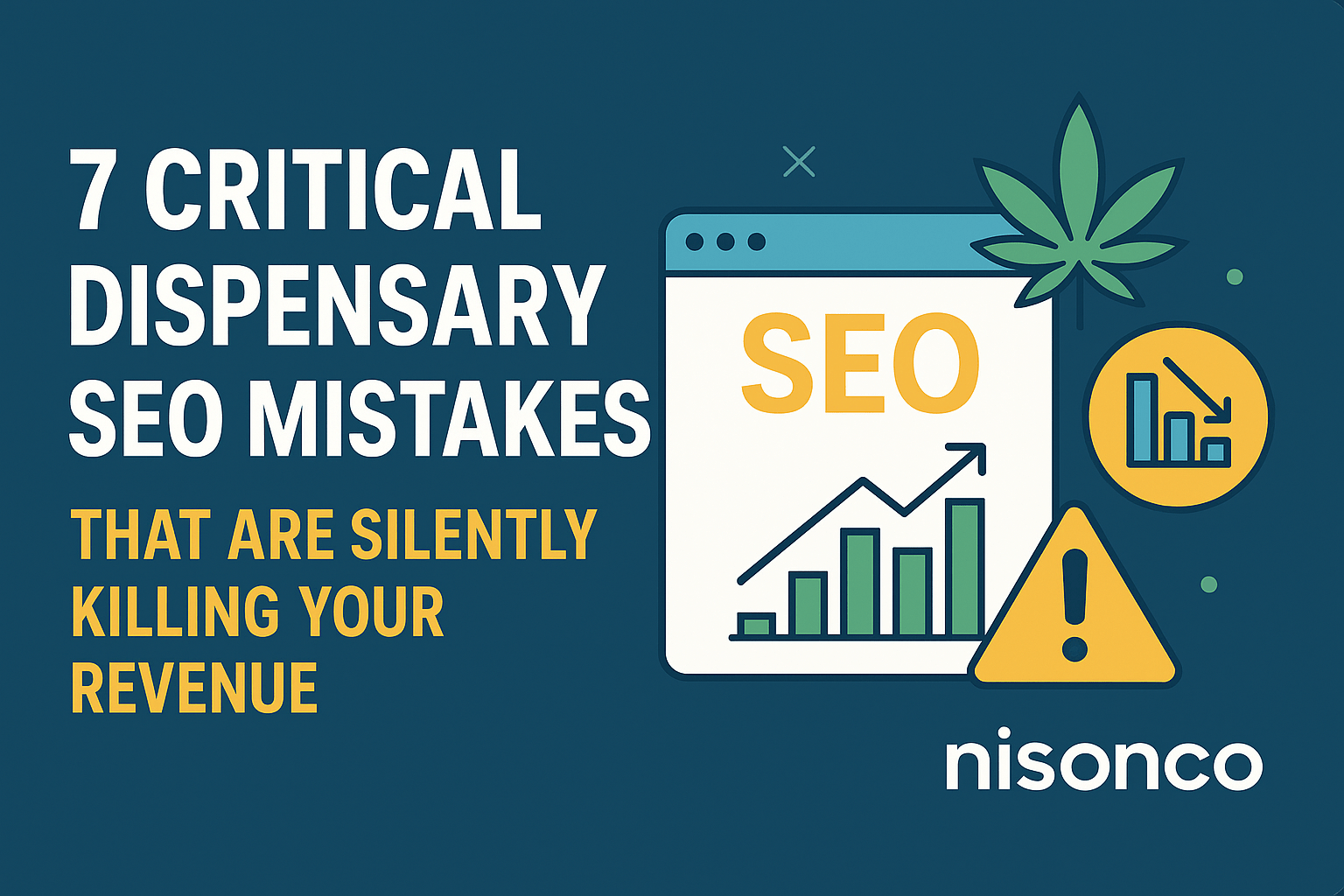Do you run a dispensary but aren’t familiar with the best, simplest SEO strategies for beginners? Or maybe you’re a little familiar with cannabis SEO, but not enough to know how to effectively optimize your dispensary on its website and beyond? Look no further! Our very own SEO account manager Colten Koch compiled a presentation on beginner dispensary SEO strategies. See the video on dispensary SEO strategy and the accompanying article outlining the main takeaways below.
The Basics of Dispensary SEO/SERPs and Increasing Visibility
Search engine optimization (SEO) is defined by the practice of increasing your website’s visibility in search engine results pages (SERPs). The SEO process is all about helping Google, Bing, and other major search engines better understand your website. By helping search engines understand and trust your site, you’re increasing the chances they’ll show and rank your website higher in results pages.
Dispensary SEO is arguably more important in the cannabis industry compared to other industries because cannabis businesses are prohibited from mainstream advertising and marketing platforms, including social media. However, optimizing your dispensary’s website for search isn’t that different from optimizing other types of websites in other industries. Ultimately, you want a fast-loading site with robust, unique, and informative content that’s universally trusted on the web and easy to navigate.
SEO can help people organically find your dispensary’s website through results pages. In turn, this can help boost consumer awareness around your dispensary, resulting in more new and recurring customers. Ultimately, SEO marketing will help your cannabis business turn in more profits and revenue.
On-Site SEO Vs. Off-Site SEO for Dispensaries
There are two ways to optimize a dispensary’s SEO presence: on-site SEO and off-site SEO. Let’s explore the similarities and differences between the two.
On-Site SEO for Dispensaries
On-site SEO encompasses optimizing your website, including through technical site audits and specific page optimizations. This includes page titles, headings, and meta tags — anything that Google can use to understand what your website provides information about. What matters most for dispensaries in terms of on-site SEO?
- Name, address, phone number (NAP) data: Display this information anywhere you can. Make sure it’s consistent not just on your website, but on any business or directory listings.
- Mobile performance: Most people use search engines on mobile devices. It’s important for your website to not only be presentable and functional for desktop users, but also for anyone on mobile. Consider (accelerated mobile pages(AMPs) to help pages on your website load faster for mobile optimization.
How do you make sure your content can help you rank for local phrases? Consider what people are actually searching for to find your dispensary. How are people going to find your website? Now is the time to conduct some initial cannabis SEO target keyword and search phrase research. Some examples of popular search phrases relevant to dispensaries include:
- Dispensary near me
- Cannabis near me
- Buy cannabis
Looking to learn how to conduct original keyword research? Check out our post on Beginner Cannabis SEO Keyword and Search Phrase Research!
In addition to targeting specific keywords similar to the ones above, it’s also key to provide relevant business information related to your dispensary on your website, such as the NAP data, customer reviews, store hours, email address, products, menus, etc.
SEO can be targeted for local, national, and international audiences. However, local SEO is most relevant to dispensaries, because the goal is to attract and target customers located within traveling distance to your cannabis business. Local SEO is a search engine optimization (SEO) strategy that helps your business be more visible in local search results on Google.
A major component of local SEO is Google’s local map pack. Local map packs are displayed at the top of Google results pages, which feature a map and the top three highest-ranked local businesses relevant to your search query.
In order to be eligible to show up in the local map packs, you need to optimize your Google My Business (GMB) page. This listing should include as much relevant business information as possible, including NAP data, hours, website URL, types of payment accepted, recent pictures, descriptions of services, etc. The listing should also be completely filled out. Also, be sure to monitor your business’s GMB page regularly and ensure all the information is accurate and correct.
Off-site SEO for Dispensaries
Off-site SEO, sometimes referred to as off-page SEO, encompasses anything related to SEO that is included on your website. This includes building links, honing in on social media presence, partnering with local organizations, receiving press coverage by news outlets, etc.
Final Dispensary SEO Takeaways:
- Identify which keywords and search phrases customers search for to find your dispensary’s website on results pages
- Optimize your website, including adding keywords to titles, headers, and meta tags
- Pump out quality, informative, and credible content — avoid fluff
- Acquire and build links using off-site SEO
- Create, optimize, and monitor your Google My Business page
- Ensure your NAP data is accurate and consistent across directories and listings
To continue following Colten’s work, connect with him on LinkedIn.
If you have any questions about NisonCo’s dispensary and cannabis SEO services, learn more about how we can help you and check out some of our SEO successes here. When you work with a cannabis SEO agency that collaborates with you, you’re already on a path to success. Get started with us and get your SEO up to snuff by contacting us today!



